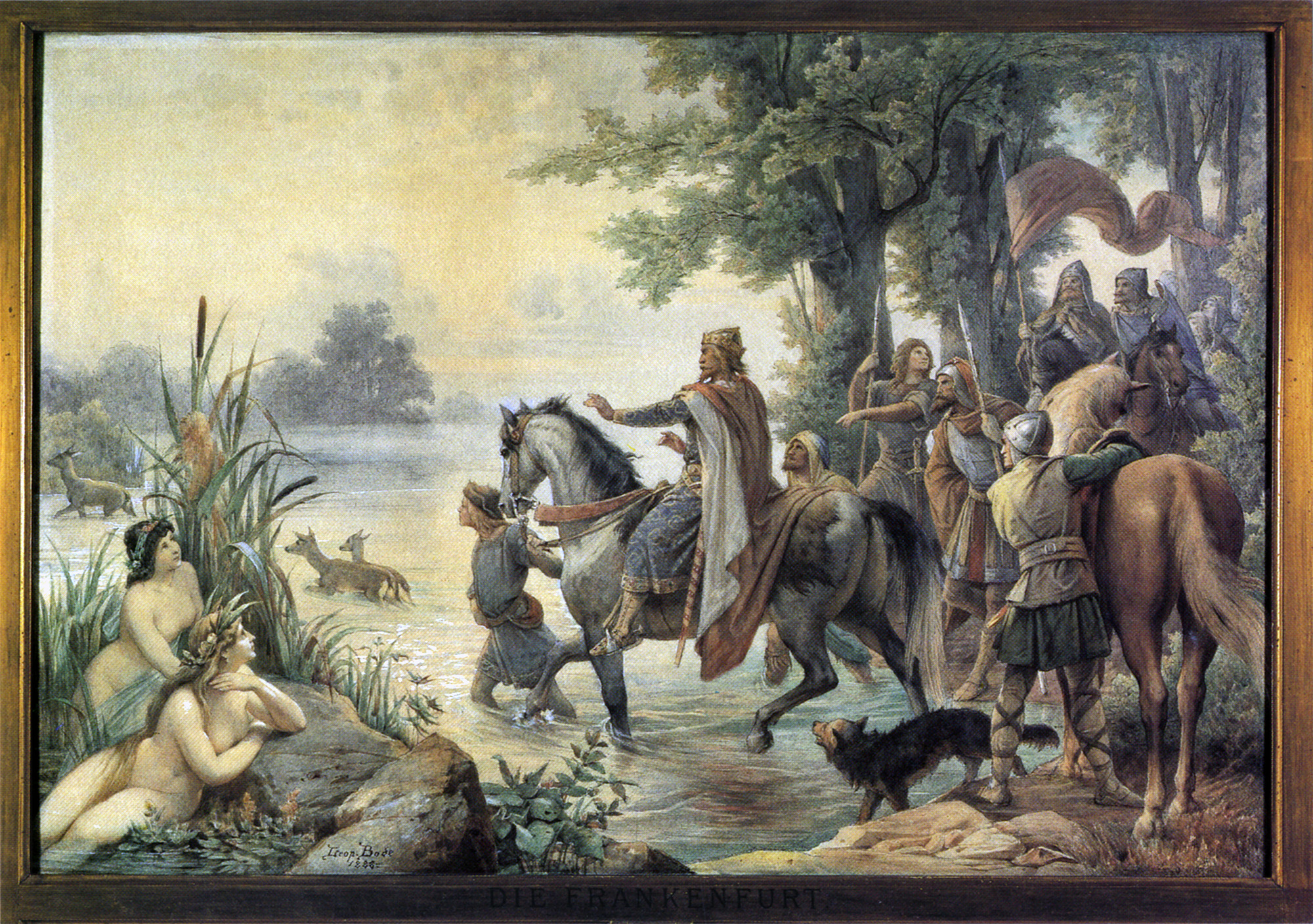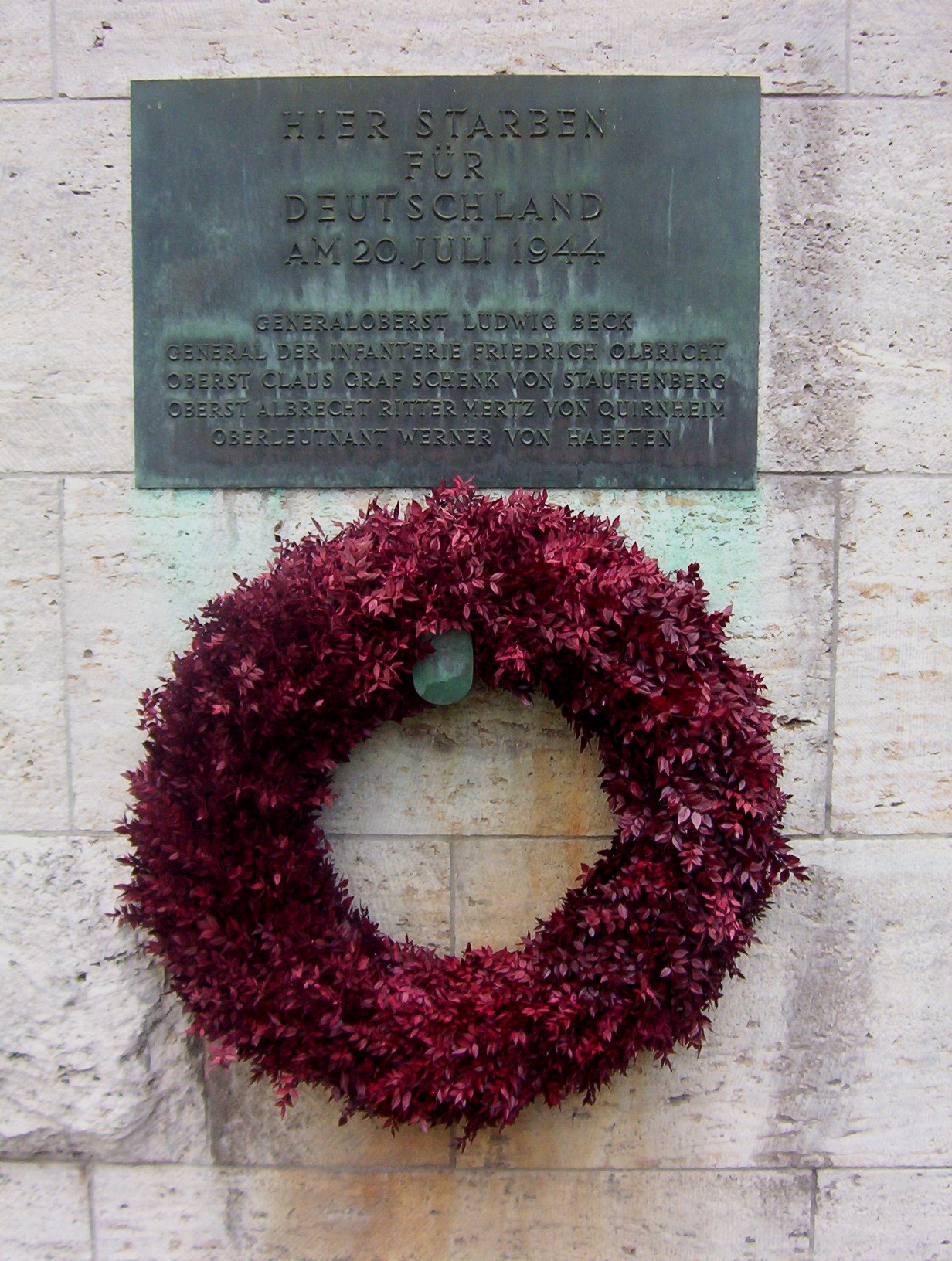|
Luise Hartnack
Luise Hartnack (1872–1942) was a German graphologist who was murdered at Ravensbrück concentration camp. She was arrested in 1942 for hiding a Jewish friend from the German secret police, Gestapo. Biography She was born Luise Bürkle on 1 January 1872 in Marbach am Neckar and married to the carpenter Ferdinand Hartnack. On 2 August 1942, at the age of 70, she was arrested by the Gestapo at her home in Frankfurt am Main for providing food and a hiding place for a good Jewish friend. On 1 October 1942, she was interned in the Ravensbrück concentration camp, where she was said to have died "of heart failure" on 14 December 1942. She is memorialized with a street stone located in Berlin Berlin ( ; ) is the Capital of Germany, capital and largest city of Germany, by both area and List of cities in Germany by population, population. With 3.7 million inhabitants, it has the List of cities in the European Union by population withi ... on Lenaustrasse near the church Kreuzb ... [...More Info...] [...Related Items...] OR: [Wikipedia] [Google] [Baidu] |
Marbach Am Neckar
Marbach am Neckar (, ) is a town about 20 kilometres north of Stuttgart. It belongs to the district of Ludwigsburg, the Stuttgart region and the European metropolitan region of Stuttgart. Marbach is known as the birthplace of Friedrich Schiller, to whom it owes the additional designation of ''Schiller City'', which it has officially held since 2022. The town is home to the Schiller National Museum, the German Literature Archive and the Modern Literature Museum. Geography Geographical location Marbach is located in the Neckar Basin on the eastern bank of a loop of the Neckar, whose impact slope is interrupted by two deep cuts. The northern of the two cuts is flowed through by the largely blocked Strenzelbach stream, the southern by the Eichgraben ditch. Marbach's old town lies on the southern slope of the Strenzelbach valley, some 30 metres above the Neckar, while the newer residential and commercial areas are spread across the slopes further to the north-east, east and ... [...More Info...] [...Related Items...] OR: [Wikipedia] [Google] [Baidu] |
Ravensbrück Concentration Camp
Ravensbrück () was a Nazi concentration camp exclusively for women from 1939 to 1945, located in northern Germany, north of Berlin at a site near the village of Ravensbrück (part of Fürstenberg/Havel). The camp memorial's estimated figure of 132,000 women who were in the camp during the war includes about 48,500 from Poland, 28,000 from the Soviet Union, almost 24,000 from Nazi Germany, Germany and Austria, nearly 8,000 from France, almost 2,000 from Belgium, and thousands from other countries including a few from the United Kingdom and the United States. More than 20,000 (15 percent) of the total were Jewish. More than 80 percent were political prisoners. Many prisoners were employed as slave laborers by Siemens & Halske. From 1942 to 1945, the Nazis undertook Nazi human experimentation, medical experiments on Ravensbrück prisoners to test the effectiveness of Sulfonamide (medicine), sulfonamides. In the spring of 1941, the SS established a small adjacent camp for male inmate ... [...More Info...] [...Related Items...] OR: [Wikipedia] [Google] [Baidu] |
Graphology
Graphology is the analysis of handwriting in an attempt to determine the writer's personality traits. Its methods and conclusions are not supported by scientific evidence, and as such it is considered to be a pseudoscience. Graphology has been controversial for more than a century. Although proponents point to positive testimonials as anecdotal evidence of its utility for personality evaluation, these claims have not been supported by scientific studies. It has been rated as among the most discredited methods of psychological analysis by a survey of mental health professionals. Etymology The word "graphology" derives from the Greek (; 'writing'), and (; 'theory'). History In 1991, Jean-Charles Gille, Jean-Charles Gille-Maisani stated that Juan Huarte de San Juan's 1575 was the first book on handwriting analysis. In American graphology, Camillo Baldi's from 1622 is considered to be the first book. Around 1830, Jean-Hippolyte Michon became interested in handwriting analy ... [...More Info...] [...Related Items...] OR: [Wikipedia] [Google] [Baidu] |
Gestapo
The (, ), Syllabic abbreviation, abbreviated Gestapo (), was the official secret police of Nazi Germany and in German-occupied Europe. The force was created by Hermann Göring in 1933 by combining the various political police agencies of Free State of Prussia, Prussia into one organisation. On 20 April 1934, oversight of the Gestapo passed to the head of the ''Schutzstaffel'' (SS), Heinrich Himmler, who was also appointed Chief of German Police by Hitler in 1936. Instead of being exclusively a Prussian state agency, the Gestapo became a national one as a sub-office of the (SiPo; Security Police). From 27 September 1939, it was administered by the Reich Security Main Office (RSHA). It became known as (Dept) 4 of the RSHA and was considered a sister organisation to the (SD; Security Service). The Gestapo committed widespread atrocities during its existence. The power of the Gestapo was used to focus upon political opponents, ideological dissenters (clergy and religious org ... [...More Info...] [...Related Items...] OR: [Wikipedia] [Google] [Baidu] |
Frankfurt
Frankfurt am Main () is the most populous city in the States of Germany, German state of Hesse. Its 773,068 inhabitants as of 2022 make it the List of cities in Germany by population, fifth-most populous city in Germany. Located in the foreland of the Taunus on its namesake Main (river), Main, it forms a continuous conurbation with Offenbach am Main; Frankfurt Rhein-Main Regional Authority, its urban area has a population of over 2.7 million. The city is the heart of the larger Rhine-Main metropolitan region, which has a population of more than 5.8 million and is Germany's Metropolitan regions in Germany, second-largest metropolitan region after the Rhine-Ruhr metropolitan region, Rhine-Ruhr region and the List of EU metropolitan regions by GDP#2021 ranking of top four German metropolitan regions, fourth largest metropolitan region by GDP in the European Union (EU). Frankfurt is one of the ''de facto'' four main capitals of the European Union (alongside Brussels, Luxembourg Cit ... [...More Info...] [...Related Items...] OR: [Wikipedia] [Google] [Baidu] |
Berlin
Berlin ( ; ) is the Capital of Germany, capital and largest city of Germany, by both area and List of cities in Germany by population, population. With 3.7 million inhabitants, it has the List of cities in the European Union by population within city limits, highest population within its city limits of any city in the European Union. The city is also one of the states of Germany, being the List of German states by area, third smallest state in the country by area. Berlin is surrounded by the state of Brandenburg, and Brandenburg's capital Potsdam is nearby. The urban area of Berlin has a population of over 4.6 million and is therefore the most populous urban area in Germany. The Berlin/Brandenburg Metropolitan Region, Berlin-Brandenburg capital region has around 6.2 million inhabitants and is Germany's second-largest metropolitan region after the Rhine-Ruhr region, as well as the List of EU metropolitan areas by GDP, fifth-biggest metropolitan region by GDP in the European Union. ... [...More Info...] [...Related Items...] OR: [Wikipedia] [Google] [Baidu] |
1872 Births
Events January * January 12 – Yohannes IV is crowned Emperor of Ethiopian Empire, Ethiopia in Axum, the first ruler crowned in that city in over 500 years. *January 20 – The Cavite mutiny was an uprising of Filipino military personnel of Fort San Felipe (Cavite), Fort San Felipe, the Spanish arsenal in Cavite, Philippine Islands.Foreman, J., 1906, The set course for her patrol area off the northeastern coast of the main Japanese island Honshū. She arrived, New York: Charles Scribner's Sons February * February 2 – The government of the United Kingdom buys a number of forts on the Gold Coast (region), Gold Coast, from the Netherlands. * February 4 – A great solar flare, and associated geomagnetic storm, makes northern lights visible as far south as Cuba. * February 13 – Rex parade, Rex, the most famous parade on Mardi Gras, parades for the first time in New Orleans for Grand Duke Alexei Alexandrovich of Russia. * February 17 – Filipino peo ... [...More Info...] [...Related Items...] OR: [Wikipedia] [Google] [Baidu] |
1944 Deaths
Events Below, the events of World War II have the "WWII" prefix. January * January 2 – WWII: ** Free France, Free French General Jean de Lattre de Tassigny is appointed to command First Army (France), French Army B, part of the Sixth United States Army Group in North Africa. ** Landing at Saidor: 13,000 US and Australian troops land on Papua New Guinea in an attempt to cut off a Japanese retreat. * January 8 – WWII: Philippine Commonwealth troops enter the province of Ilocos Sur in northern Luzon and attack Japanese forces. * January 11 ** United States President Franklin D. Roosevelt proposes a Second Bill of Rights for social and economic security, in his State of the Union address. ** The Nazi German administration expands Kraków-Płaszów concentration camp into the larger standalone ''Konzentrationslager Plaszow bei Krakau'' in occupied Poland. * January 12 – WWII: Winston Churchill and Charles de Gaulle begin a 2-day conference in Marrakech. * Janua ... [...More Info...] [...Related Items...] OR: [Wikipedia] [Google] [Baidu] |
German Women Activists
German(s) may refer to: * Germany, the country of the Germans and German things **Germania (Roman era) * Germans, citizens of Germany, people of German ancestry, or native speakers of the German language ** For citizenship in Germany, see also German nationality law **Germanic peoples (Roman era) *German diaspora * German language * German cuisine, traditional foods of Germany People * German (given name) * German (surname) * Germán, a Spanish name Places * German (parish), Isle of Man * German, Albania, or Gërmej * German, Bulgaria * German, Iran * German, North Macedonia * German, New York, U.S. * Agios Germanos, Greece Other uses * German (mythology), a South Slavic mythological being * Germans (band), a Canadian rock band * "German" (song), a 2019 song by No Money Enterprise * ''The German'', a 2008 short film * "The Germans", an episode of ''Fawlty Towers'' * ''The German'', a nickname for Congolese rebel André Kisase Ngandu See also * Germanic (disambiguati ... [...More Info...] [...Related Items...] OR: [Wikipedia] [Google] [Baidu] |
German Resistance To Nazism
The German resistance to Nazism () included unarmed and armed opposition and disobedience to the Nazi Germany, Nazi regime by various movements, groups and individuals by various means, from assassination attempts on Adolf Hitler, attempts to assassinate Adolf Hitler or to overthrow his regime, defection to the enemies of the Third Reich and sabotage against the German Army and the apparatus of repression and attempts to organize armed struggle, to open protests, rescue of persecuted persons, dissidence and "everyday resistance". German resistance was not recognized as a united resistance movement during the height of Nazi Germany, unlike the more organised efforts in other countries, such as Italian Resistance, Italy, Danish resistance movement, Denmark, the Soviet partisans, Soviet Union, Polish Underground State, Poland, Greek Resistance, Greece, Yugoslav Partisans, Yugoslavia, French Resistance, France, Dutch resistance, the Netherlands, Resistance in the Protectorate of Bo ... [...More Info...] [...Related Items...] OR: [Wikipedia] [Google] [Baidu] |





